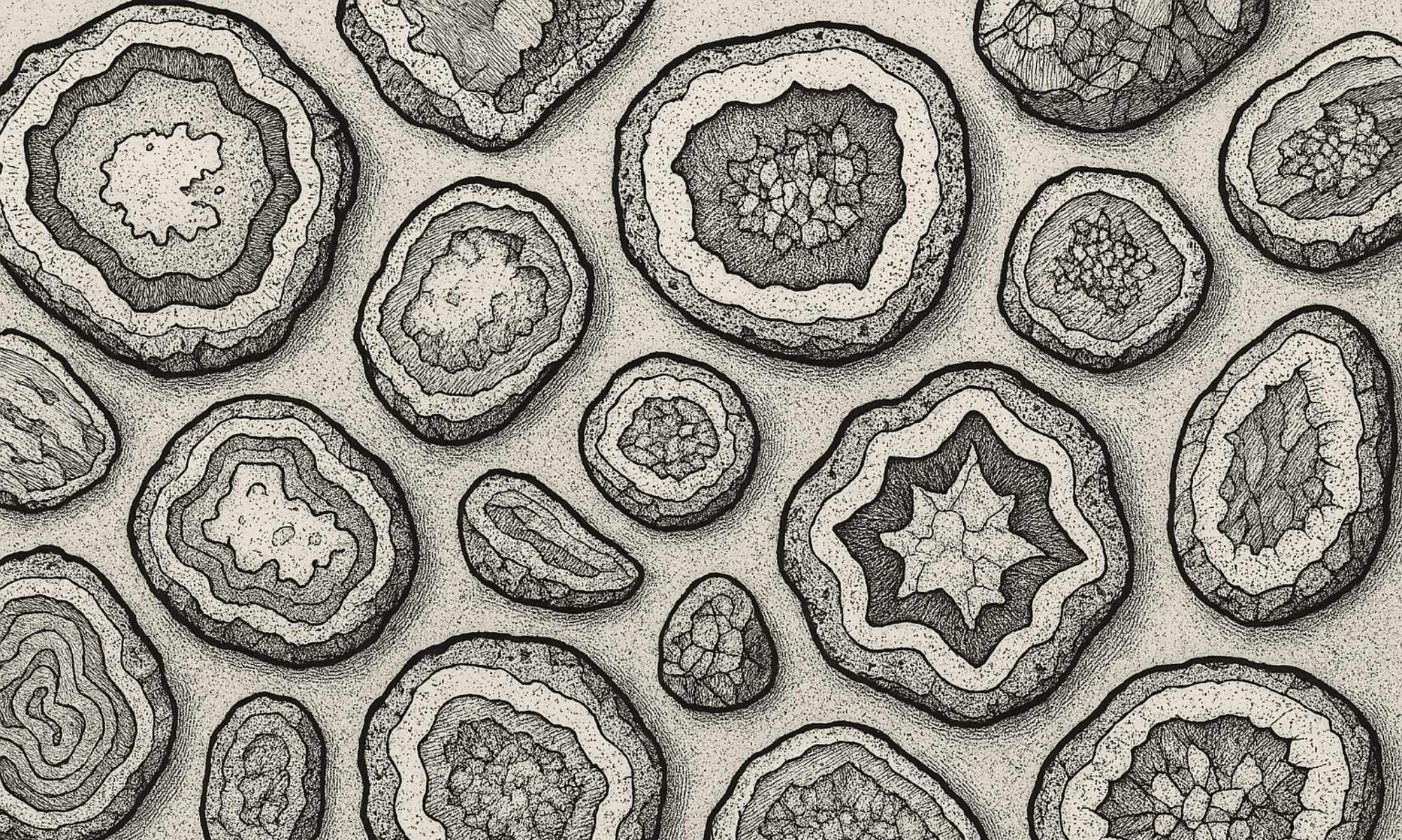European Thundereggs: Old World Elegance in Volcanic Stone
Europe might not be the first place rockhounds look for thundereggs, but it should be. This continent, steeped in volcanic history, is home to some of the most striking, finely detailed, and historically significant thundereggs in the world. From the famed beds of Germany to obscure localities in Hungary and Poland, European thundereggs combine geological intrigue with Old World charm.
What Sets European Thundereggs Apart?
European thundereggs tend to form in older, well-weathered rhyolite flows and volcanic tuffs. While American eggs often grab attention with bold colors and chaotic patterns, European nodules are known for their refined beauty—tight banding, soft color transitions, and classic symmetry.
Many are relatively small in size compared to their Western counterparts, but what they lack in mass, they make up for in detail.
Common traits include:
- Intricate fortification agate
- Delicate pastel color palettes (grays, purples, creams, and soft reds)
- High polish potential and fine crystalline interiors
- Dramatic internal symmetry (especially in German specimens)
Where Are European Thundereggs Found?
Europe has several notable thunderegg locations, each with its own character:
Germany – The Classic Source
Germany is arguably the most famous European source, particularly the Saxony region and the Rotliegend volcanics of Thuringia. German thundereggs are some of the most studied in the world, with scientific literature dating back over a century.
- Often perfectly spherical or rounded
- Gray to bluish outer matrix
- Interiors range from colorless chalcedony to lavender, red, or smoky agate
- Known for precise, almost geometric internal banding
Collectors consider high-grade German thundereggs museum-quality material, and fine specimens fetch a premium.
Hungary
The Mátra Mountains of northern Hungary yield thundereggs with vibrant agate fillings, often in shades of red, yellow, and orange. Some have brecciated centers or even opal seams. The surrounding rhyolite can weather into unusual outer shapes, making them stand out even before cutting.
Poland
Less common but highly collectible, Polish thundereggs come from areas like Lower Silesia. They may have simple interiors but often contain attractive mossy inclusions or fine quartz druzy.
Other Sources
- France – Some older reports mention thundereggs in volcanic regions of Auvergne, though rarely seen on the market.
- Spain and Italy – Volcanic nodules occur, but they’re typically not “true” thundereggs (i.e., they lack the classic rhyolitic cavity-fill structure).
- Slovakia – Limited specimens from volcanic zones suggest small-scale potential, often agate-rich.
Why Collect European Thundereggs?
- Historical pedigree – German thundereggs were among the first formally described and categorized; they have a place in both geology and museum history.
- Fine cutting material – Ideal for book-matched display, cabs, or slabs with tight patterning and smooth polish.
- Scarcity – European thundereggs are rarely mined on a commercial scale today. Most come from old stock, private collections, or limited hobbyist digs.
Lapidary Considerations
European thundereggs are typically dense and well-silicified. They take an excellent polish and are less prone to fractures than many younger, more porous nodules. Their consistent hardness and smaller size make them ideal for precision slicing and finishing.
Tips for Buying and Identifying
- Look for provenance – German and Hungarian specimens are especially valuable with known source locations.
- Inspect the matrix – German nodules often have a smooth gray matrix, while Hungarian ones tend toward reddish or yellow tones.
- Beware of fakes – While not as common as with African or Indonesian material, occasional “enhanced” or misrepresented specimens do appear online.
A Collector’s Treasure from the Heart of Europe
European thundereggs represent the meeting point of natural beauty and scientific history. They’re quieter than their American or Indonesian cousins—but no less stunning. Whether you’re cutting them for jewelry or keeping them whole for display, these nodules offer a glimpse into the ancient volcanism that helped shape the continent.
Elegant, refined, and increasingly rare—European thundereggs are a must-have for any serious collector or lapidary artist.
